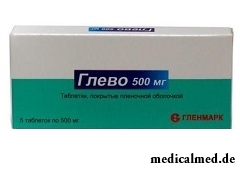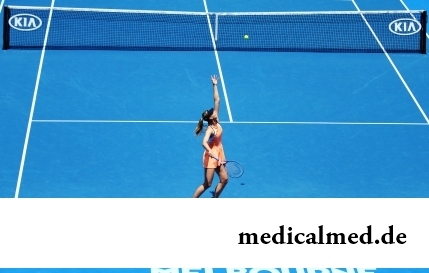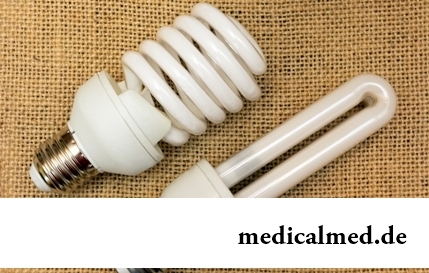





Glevo
Application instruction:
 Glevo – drug with antimicrobic bactericidal action.
Glevo – drug with antimicrobic bactericidal action.
Form of release and structure
Glevo is let out in the form of tablets, film coated: round, biconvex, brick-red (on 250 mg) or light orange with a pink shade (on 500 mg) colors, with the line of a break from one of the parties (on 5 pieces in blisters, on 1, 2 or 5 blisters in a cardboard pack).
Is a part of 1 tablet:
- Active agent: levofloxacin (in the form of a gemigidrat) – 250 or 500 mg;
- Auxiliary components: кросповидон, microcrystallic cellulose, povidone (K-30), starch, magnesium stearate, microcrystallic cellulose (avitset pn101).
Structure of a film cover: a macrogoal (polyethyleneglycol 6000), dye ferrous oxide red, a gipromelloza, dibutyl phthalate, titanium dioxide, talc, dye ferrous oxide yellow (tablets on 500 mg).
Indications to use
Glevo is appointed for treatment of the infectious and inflammatory diseases caused by microorganisms, sensitive to active agent of drug, the following systems and bodies:
- ENT organs (including acute sinusitis);
- The urinary system and kidneys (complicated and uncomplicated infections, including prostatitis, acute pyelonephritis);
- Lower parts of respiratory tracts (including community-acquired pneumonia, exacerbation of chronic bronchitis);
- Soft tissues and skin (abscess, the suppurated atheromas, furunkuleza);
- Generative organs;
- Abdominal cavity (along with other medicines having effect on anaerobic microflora).
Contraindications
- Epilepsy;
- Damage of sinews at earlier carried out treatment of a hinolonama;
- Pregnancy and period of a lactation (breastfeeding);
- Age (up to 18 years);
- Hypersensitivity to drug components, and also to other ftorkhinolona.
Glevo should appoint with care the patient of advanced age (because of high risk of the accompanying decrease in function of kidneys), and also at deficit glyukozo-6-fosfatdegidrogenazy.
Route of administration and dosage
Glevo is accepted inside by 1-2 times a day. Tablets need to be swallowed entirely, washing down them with enough liquid (100-250 ml). Drug can be accepted between meals or before food. It is not necessary to chew tablets.
Doses are defined by weight and the nature of an infection, and also sensitivity to Glevo's action of the estimated activator.
The following mode of dosing is recommended to patients with normal or moderately reduced function of kidneys (the clearance of creatinine is more than 50 ml in a minute):
- Sinusitis: once a day on 500 mg for 10-14 days;
- Exacerbation of chronic bronchitis: once a day on 250 or 500 mg for 7-10 days;
- Community-acquired pneumonia: 1-2 times a day on 500 mg for 7-14 days;
- Uncomplicated infections of urinary tract: once a day on 250 mg for 3 days;
- Prostatitis: once a day on 500 mg for 28 days;
- The complicated infections of urinary tract, including pyelonephritis: once a day on 250 mg for 7-10 days;
- Infections of soft tissues and skin: 1-2 times a day on 250 or 500 mg for 7-14 days;
- Infections of an abdominal cavity: once a day on 500 mg for 7-14 days (along with the antibacterial medicines operating on anaerobic flora).
Patients with renal failures need correction of the mode of a drug dosing.
As well as during use of other antibiotic means, it is recommended to continue Glevo's therapy not less than 2-3 days after a reliable eradikation of the activator or after normalization of body temperature.
After the continuous out-patient peritoneal dialysis (COPPD) or a hemodialysis introduction of additional doses is not required.
For patients of advanced age the mode of dosing is not changed, except cases of low clearance of creatinine.
At functional disturbances of a liver special selection of doses is not required as active agent is metabolized in a liver in an insignificant measure.
If administration of drug was missed, it is necessary to take a pill as soon as possible. Further it is necessary to continue administration of drug according to the scheme.
Side effects
During therapy development of disturbances from some systems and bodies is possible:
- Cardiovascular system: lengthening of an interval of QT, vascular collapse, lowering of arterial pressure, tachycardia; extremely seldom – a ciliary arrhythmia;
- Urinary system: acute renal failure, intersticial nephrite, giperkreatininemiya;
- Alimentary system: a loss of appetite, nausea, hepatitis, diarrhea (including with blood), digestion disturbance, vomiting, a pseudomembranous coloenteritis, an abdominal pain, a hyperbilirubinemia, increase in activity of hepatic transaminases, dysbacteriosis;
- Musculoskeletal system: tendinitis, muscular weakness, arthralgia, rupture of sinews, mialgiya, рабдомиолиз;
- Endocrine system: a hypoglycemia (the increased sweating, increase in appetite, nervousness, a shiver);
- Central and peripheral nervous system: dizziness, a headache, confusion of consciousness, weakness, sleeplessness, drowsiness, concern, a tremor, fear, paresthesias, motive frustration, hallucinations, a depression, epileptic seizures (at predisposed patients);
- System of a hemopoiesis: thrombocytopenia, neutropenia, hemolitic anemia, eosinophilia, leukopenia, pancytopenia, agranulocytosis, hemorrhages;
- Sense bodys: hearing disorder, sight, sense of smell, tactile and flavoring sensitivity;
- Allergic reactions: hyperemia and itch of skin, hypostasis of mucous membranes and skin, acute anaphylaxis, malignant exudative erythema (Stephens-Johnson's syndrome), small tortoiseshell, bronchospasm, allergic pneumonitis, suffocation, toxic epidermal necrolysis (Lyell's disease), vasculitis;
- Others: development of superinfection, adynamy, photosensitization, persistent fever, porphyria aggravation.
Special instructions
Patients during therapy need to carry out adequate hydration of an organism.
At development of symptoms of pseudomembranous colitis and a tendinitis it is necessary to cancel immediately treatment and to appoint the corresponding therapy.
To avoid damage of integuments (photosensitization) during treatment it is necessary to avoid artificial and solar UF-radiation.
At patients with damages of a brain in the anamnesis (a severe injury, a stroke) development of spasms is possible. The risk of development of hemolysis increases at insufficiency glyukozo-6-fosfatdegidrogenazy.
During therapy it is necessary to be careful at control of motor transport, and also when performing potentially dangerous works demanding high concentration of attention and bystry psychomotor reactions.
Medicinal interaction
At simultaneous use of Glevo with some medicines there can be undesirable effects:
- Non-steroidal anti-inflammatory drugs, theophylline: convulsive readiness increases;
- Cimetidinum and medicines blocking canalicular secretion: removal of a levofloksatsin is slowed down;
- Glucocorticosteroids: the risk of a rupture of sinews increases;
- Hypoglycemic drugs: development hyper - and a hypoglycemia is possible (strict control of level of glucose in blood is necessary).
Glevo's action lowers сукральфат, the drugs oppressing motility of intestines, antiacid medicines with the content of aluminum/magnesium and salt of iron (it is necessary to observe a break between administrations of drugs not less than 2 hours).
Terms and storage conditions
To store in protected from light, the place, dry, unavailable to children, at a temperature up to 25 °C.
Period of validity – 2 years.
Name of drug
Price
Drugstore
When lovers kiss, each of them loses 6,4 calories a minute, but at the same time they exchange nearly 300 species of various bacteria.

The name of this disease precisely reflects the problem reason: it consists in the bra fastener pressure upon a certain zone...
Section: Articles about health
The Genetically Modified Organisms (GMO) are plants or animals (as a rule, agricultural) to whose genotype purposeful changes were made. Opposition of supporters and opponents of inclusion of such organisms in foodstuff всег...
Section: Articles about health
Sometimes it seems that modern society was divided into two camps: representatives of the first are sure that only the woman has to be responsible for contraception, representatives of the second, respectively, are sure that it is destiny of men. Meanwhile the question of contraception has very many aspects – both psychological, and legal and, of course, medical....
Section: Articles about health
Reactive pancreatitis - the disease which is characterized by inflammatory process in a pancreas which arises more often everything...
Section: Articles about health
Within several decades of our compatriots convinced that the use of butter nasty affects a condition of coronary vessels. As a result the reputation of a product was impaired thoroughly a little, and many almost ceased to include...
Section: Articles about health
Extracorporal fertilization – one of the most modern methods of controlling with infertility. So far he already helped a significant amount of married couples to become happy parents. Usually to the EKO procedure difficult and very expensive, resort in those situations when all other ways to help couple to bring the child are inefficient. "Conception in a test tube" yields quite good results in cases of infertility of one of partners, existence at the woman of impassability of uterine tubes...
Section: Articles about health
Phobia – the persuasive fear of a certain contents shown in a specific situation against the will of the person. Concepts of a phobia and fear...
Section: Articles about health
Aspirin (acetylsalicylic acid) – one of those drugs which are known literally to all. It is available in each home first-aid kit, and many accept it at the first signs of an indisposition, often without having a fair idea of properties and a therapeutic eff...
Section: Articles about health
Bathing in broths of medical flowers and plants (phytobathtub) was eurysynusic since Cleopatra who is a good judge in all that concerns beauty and health. And today phytobathtubs is the simple and available means allowing not only to remove nervous tension, but also to recover from many diseases. Grass bathtubs at treatment of cold, osteochondrosis, radiculitis, skin diseases, and also diseases of urinary tract and vessels are especially effective....
Section: Articles about health
For the city dweller the fitness is the most convenient sport. It is enough to acquire the subscription to the gym to receive to a toast...
Section: Articles about health
Proofs of efficiency of Mildronate at treatment of coronary heart disease with stenocardia can be found in many publications of the end of the twentieth century. Researches were conducted since 1984, including placebo - controlled effects. In total клиничес...
Section: Articles about health
Statistically, in Russia about 34% of citizens smoke. Most of consumers of tobacco has problems with health sooner or later. Not only smokers, but also their relatives suffer. Besides, cigarettes are expensive, and need of their acquisition goes a heavy burden on the budget of thousands of Russian families. Many people dream to refuse harmful tendency, but everyone manages to make it not: nicotine addiction is affectionate and to get rid of it not easy....
Section: Articles about health
Epilepsy is one of widespread neurologic diseases. Parents, whose children suffer from this illness, should face rumors and delusions, many of which remained since the Middle Ages....
Section: Articles about health
The person, as well as all other beings living on our planet feels weather changing. It is normal meteosensitivity, not...
Section: Articles about health
The stroke is one of the most widespread diseases of the person, annually in the world about 6 million cases of this pathology are registered. According to medical statistics, strokes occur almost three times more often than myocardial infarctions. Disease otno...
Section: Articles about health
Beauty shop – the place which is associated only with positive emotions: joy, pleasure, relaxation. However visit of salon where work with biological material of clients, not always harmlessly is conducted. Today more than 100 pathogenic microorganisms who can catch in beauty shop including deadly to health are known....
Section: Articles about health
Life of the modern woman is very difficult. Opportunities to realize itself are wide: it not only education and career, but also most differently...
Section: Articles about health
Bulimia and anorexia, are heavy deviations of a feeding behavior, become a cause of death of patients much more often than all other nervous breakdowns combined. In 60% of cases two illnesses accompany each other: patients feel horror before danger on...
Section: Articles about health
It is difficult to revaluate importance of kidneys for an organism. These bodies not only perform work on purification of blood of decomposition products and removal of excess liquid. They are responsible also for production of some hormones necessary for maintenance of a normality of a bone tissue, and also for a producing red blood cells – erythrocytes....
Section: Articles about health
Energy saving lamps are one of the most popular products of innovative technologies, and there is no wonder: they much эк...
Section: Articles about health
A little more than a century ago goat milk was a traditional food stuff of most of Russians. Unfortunately, today on tables of our compatriots it appears extremely seldom. The reason that the use of so useful product practically descended on...
Section: Articles about health
For anybody not a secret that our country is one of the most "drinking" in the world. At clear understanding that the use of hard alcoholic drinks – occupation extremely harmful, most of Russians belong to alcoholism with unjustified loyalty. Apparently, existence of a set of myths in which tendency to excessive libations looks nearly positively is explained by it. It is worth getting acquainted with the most widespread of similar delusions and to be convinced in them not...
Section: Articles about health
Each woman has preferences in the field of use of those goods which help us to look good, feel се...
Section: Articles about health
What will only not be thought up by persons interested to have a beautiful figure. Here the last innovation – for weight loss needs to be eaten greasy food. Let's understand whether there is at a fatty diet common sense....
Section: Slideshow
Subfebrile temperature call fervescence to 38 degrees, and subfebrile condition - existence of such temperature over 3 days, and quite often it happens without the visible reasons. Existence of subfebrile condition - a strong indication of disturbances in an organism which can be caused by various reasons: disease, stresses, hormonal failures. Despite the seeming inoffensiveness it is a state at which people often continue to lead a usual life, often is a sign of many of a zabolev...
Section: Articles about health




